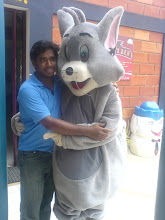The Customs and Principles of Sabarimala :
* Sannidhanam
Sannidhanam is the area where the Ayyappa temple is situated. At Sannidhanam, devotees climb up the holy 18 steps to reach the Sanctum sanctorum. Arrangements are made for the devotees to crack coconuts on the right side of the steps. Now cracking of coconuts on the 18 steps is prohibited for safety reasons. The Malikappuram temple complex, sub temple of Vavar, Neyyabhishekam counters, prasadam counters, information centres, telephone and post office facility etc. are visible in and around Sannidhanam.
* Aham Bhramasmi and Tattvamasi
The important message given at the temple is the ultimate knowledge that you are God, Aham Bhramasmi in Sanskrit means this. Due to this pilgrims call each other swami. Kantararu Maheshwararu of Tazhamon family is the supreme priest of Sabarimala. Tattvamasi is a sanskrit word made up of three words Tat, Tvam and Asi meaning That is You. It is the message that is given out by the Lord. It means, in short, you are part of the Universal Soul (in Sanskrit "Paramatma") which is the quintessence of Advaita philosphy. It also means for reaching The Paramatma or Universal Soul, you search yourself .i.e. the Jeevatma(Life soul) present in you.
* Irumudikettu
The two-pronged sacred bundle (Irumudikettu or Pallikkettu) in cloth bag is a must for the pilgrimage to Sabarimala. After tying the sacred bundle, the pilgrim starts his trip to Sabarimala. Preparing the bundle is done at home or in a temple or at a place where pilgrims gather. The long fresh cloth bag of the bundle has an opening in the middle part. The bag has two parts, the munkettu (the front part) and the pinkettu(the back part). It is a senior Ayyappan (Guruswami) who fills the bag and fastens it. The place (pandal) for the ceremony must be clean and decorated. Ideally, all objects used for the fire ritual should be arranged for this ceremony, too. In any case, the sacred lamp, aval (beaten rice), malaru (fluffed rice) rice , a coconut, betel leaves, arecanut and a coin are absolutely necessary items. First, a coconut of the proper shape is filled with ghee in great reverence, amidst cries of 'Saranam Ayyappa' ( Ayyappa, I take refuge in thee). Continuing the chantings, a betel leaf, an arecanut and a coin are placed in the front bag of the bundle. This is conceived as a symbolic of the installation of the Lord in the sacred bundle. Three handfuls of rice are dropped into it. Offerings for the Lord are also deposited in this part of the bundle. The other side of this bag is filled with objects such as provisions that are needed during the trek. When the bundle is ready in this way, betel leaves, arecanut and a coin are placed on the top of the bundle as a symbolic act of praying for forgiveness for all sins. Then the Kanni Ayyappan (first-timer) is blessed by the Guru Swami and other seniors present. After this, camphor is lighted as part of the pooja. Last of all, the pilgrim, with the help of the Guru Swami, turns east, puts the sacred bundle on his head, chants the 'Saranam' mantra and breaks a coconut.
* Neyyabhishekam
The most important 'Vazhipaadu' at Sabarimala is Neyyabhishekam. Ghee brought by the pilgrims in their Irumudi is poured on to the idol. It is symbolic of the merging of Jeevatman with the Paramatman. The myth is that Jeevatma has been roaming for millions of years undergoing deaths and births. The ultimate goal of the pilgrimage is to attain this union with the Supreme Deity. This long and tedious journey to Sabarimala for the Neyyabhishekam is symbolic. Pouring of ghee on the idol of Lord Ayyappa is called 'Neyyabhishekam". Neyyabhishekam is a holy ceremony as the ghee here represents the power of Lord Vishnu. The pouring of water - 'Jalabhishekam' is considered worship of 'Sivasakthi'. The combination of Vaishnava and Saiva powers is revealed in these holy Abhishekams.


0 Comments:
Post a Comment
Subscribe to Post Comments [Atom]
<< Home